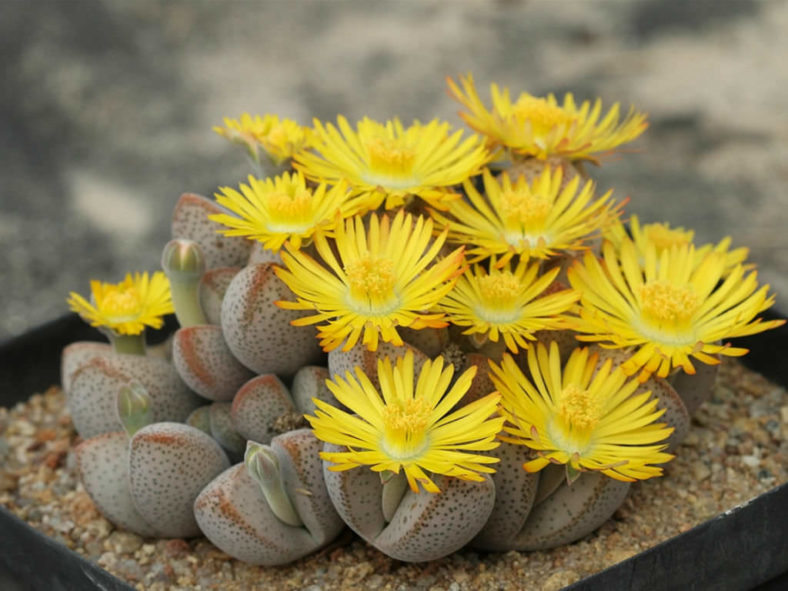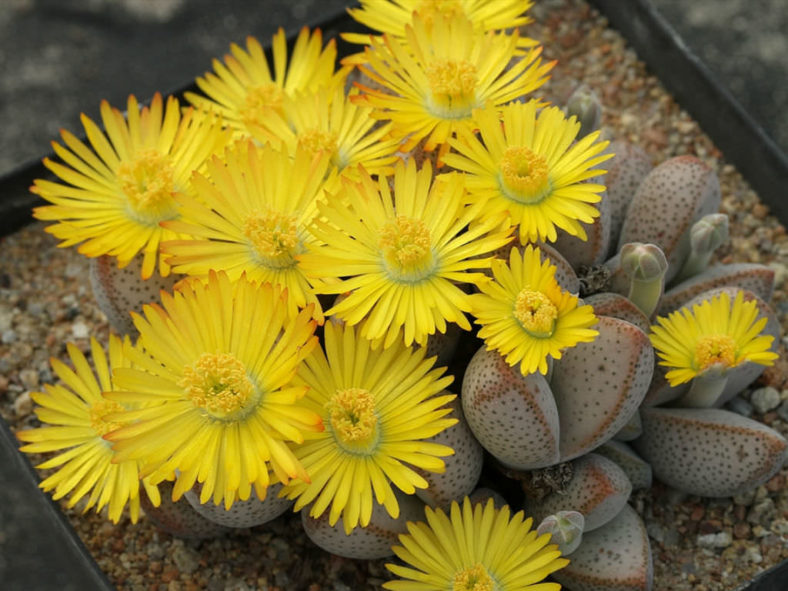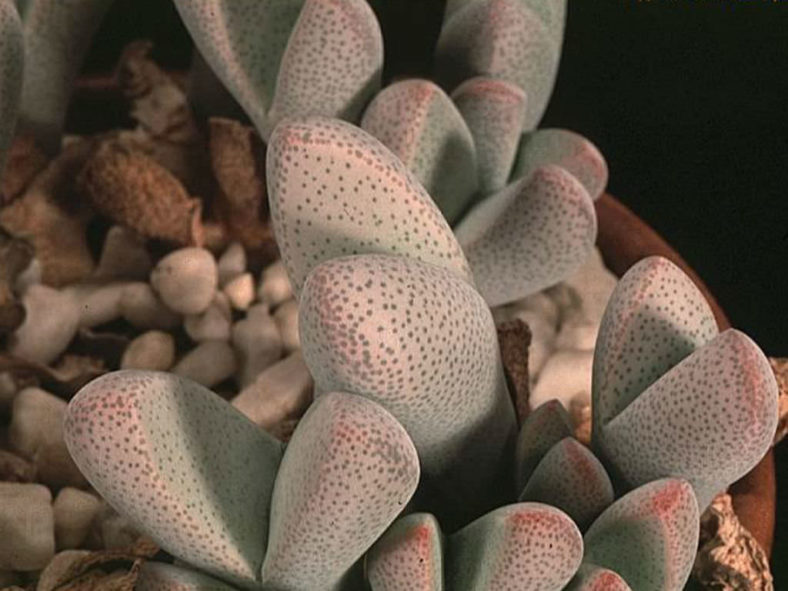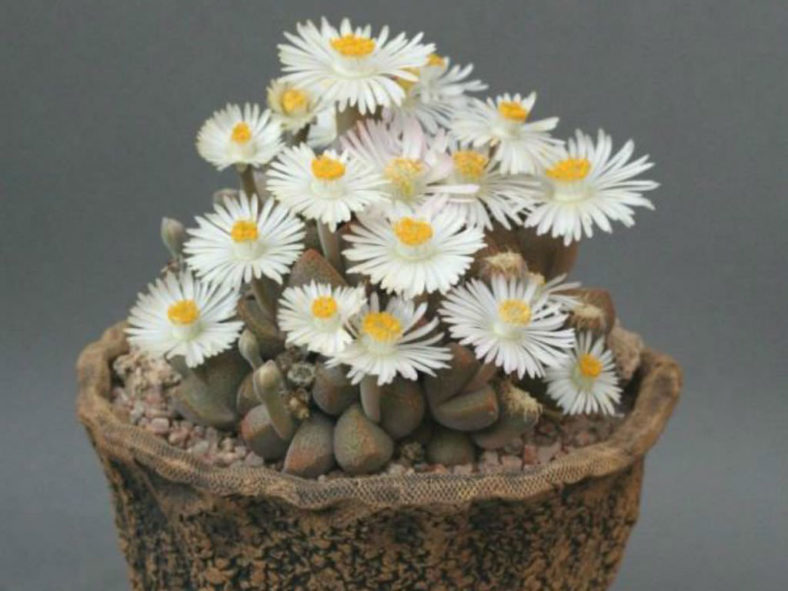Scientific Name
Dinteranthus microspermus subsp. puberulus (N.E.Br.) N.Sauer
Common Name(s)
Stone Plant, Living Stone
Synonym(s)
Dinteranthus puberulus, Dinteranthus punctatus, Dinteranthus microspermus var. acutipetalus
Scientific Classification
Family: Aizoaceae
Subfamily: Ruschioideae
Tribe: Ruschieae
Genus: Dinteranthus
Etymology
The specific epithet "puberulus" (pronounced "pub-ER-uh-lus") means "having short, soft hairs; puberulous" and refers to the velvety leaves of this species.
Origin
Dinteranthus microspermus subsp. puberulus is native to South Africa (Northern Cape).
Description
Dinteranthus microspermus subsp. puberulus is a small stemless succulent with a body that consists of a pair of opposite, velvety, reddish-grey-green to grey-violet leaves with green spots. It can grow up to 1.2 inches (3 cm) tall, usually solitary or few-branched. The leaves are thick, fleshy, boat-shaped, and can measure up to 1 inch (2.5 cm) long.
The solitary flower is many-petaled, yellow or whitish, often tipped with red, and appears in summer. The fruit is a 6- to 10-locular capsule with broad valve wings.

Hardiness
USDA hardiness zones 10a to 11b: from 30°F (-1.1°C) to 50°F (10°C).
How to Grow and Care
Adult plants of this genus behave like Lithops, with summer expansion leading to flowering in fall, followed by a slow transfer of resources in winter. The main difference is that two active leaf pairs are not unusual in some Dinteranthus.
Dinteranthus requires slightly less water than most Lithops. Excellent drainage is essential. Their nutritive requirements are amazingly modest, and the root systems of even the healthiest plants are minuscule. What they need most critically is good light, which will give them a bone-white aspect. Older long-stemmed plants can and usually should be turned into cuttings and re-rooted.
Sow the seeds in high summer. Use sterilized soil with extra grit and enough peat to ensure high acidity. Place the pot in a water bath, cover the whole assemblage with clear plastic, and place it outdoors in a bright spot. Wait three full days, remove the pots to your usual place of germination, and mist them at least twice a day. Seedlings should be evident within 12 days of sowing.
Learn more at How to Grow and Care for Dinteranthus.
Links
- Back to genus Dinteranthus
- Succupedia: Browse succulents by Scientific Name, Common Name, Genus, Family, USDA Hardiness Zone, Origin, or cacti by Genus
Photo Gallery
Click on a photo to see a larger version.


